The Friends’ third church tour of the Summer, on 11 July, covered three churches near Tenterden – High Halden, Woodchurch and Appledore – none of which we had seen for many years. We again had good weather and about 45 people attended. We received an outstandingly warm welcome at all three churches, including (unexpected) refreshments at Woodchurch and a fine tea at Appledore.
High Halden, St Mary
The outstanding feature of St Mary’s, which confronts the visitor as they approach across the pretty green north of the church, is the wooden west tower. There is no other tower like it in Kent: for close parallels you need to look to Essex (nine examples, of which Blackmore is the finest) or east Surrey (Newdigate or Burstow). There are, admittedly, similarities with the free- standing belfry at Brookland in Kent but there both construction and covering are different (Brookland is, for instance entirely shingled). The lowest octagonal stage at High Halden has timber walls formed of interlocking timber boards, some with simple traceried windows cut in them. Above are a square stage and then an octagonal shingled spire. All of this is thought to date from the 14 th century. Within, there is a late medieval passage leading to the church which doubles as a ringing chamber; the passage has timber walls and a splendidly framed timber ceiling. We were able to examine the timber framing of the tower and the medieval wooden staircase whose treads are formed of quartered logs. The church has both west and south porches, both of timber. The latter has an immense outer arch, bargeboards and traceried windows in the sides, all gratifyingly unrestored and is among the best timber porches in Kent.
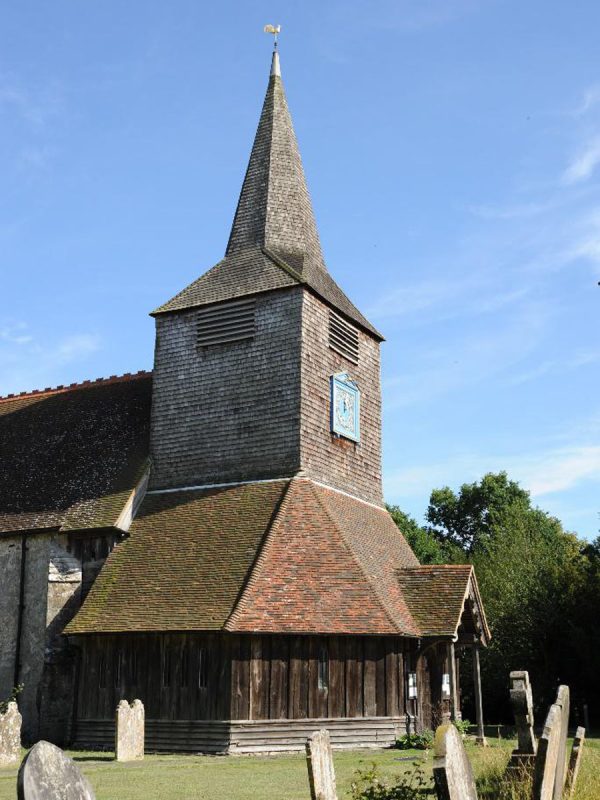

After these timber marvels the church itself is more subdued. The nave may from its proportions be 12th century, with a south aisle of c1500, dateable by evidence from a will. The piers have large circular stone seats, unusual at this date, and a square platform for the 13th century font projecting from the westernmost seat, a very uncommon arrangement. The chancel is of the late 13th century and has a late medieval south chapel. There is a chapel of similar date north of the nave with an extraordinarily long squint enabling those seated in the chapel to see the elevation of the host, the key moment in the medieval Mass. Both nave and chancel have good crown-post roofs, the former illuminated by four small windows in the nave east wall above the chancel arch.
The church is not rich in furnishings. Apart from the font, the best are the medieval south door and a very pretty window of 1986 in the south chapel by Lawrie Lee, in his immediately recognisable style of distinctively drawn figures and rich colours and patterns.
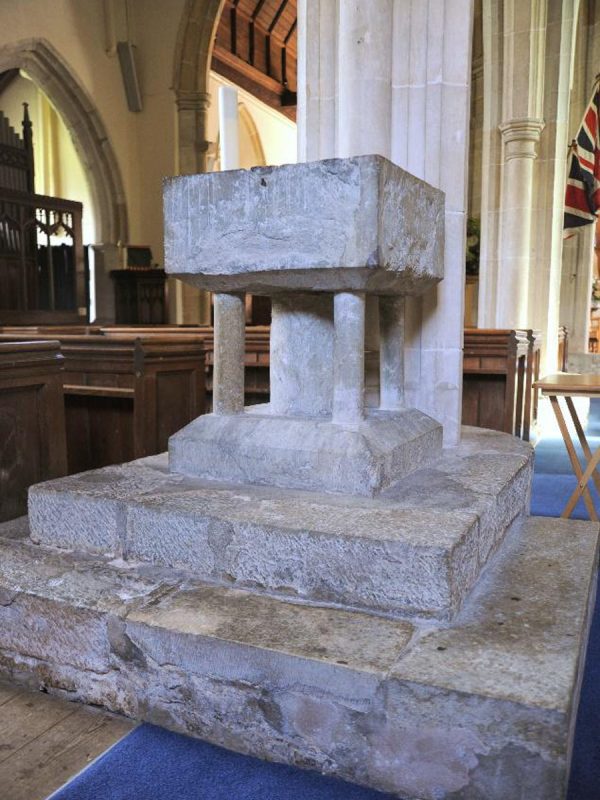
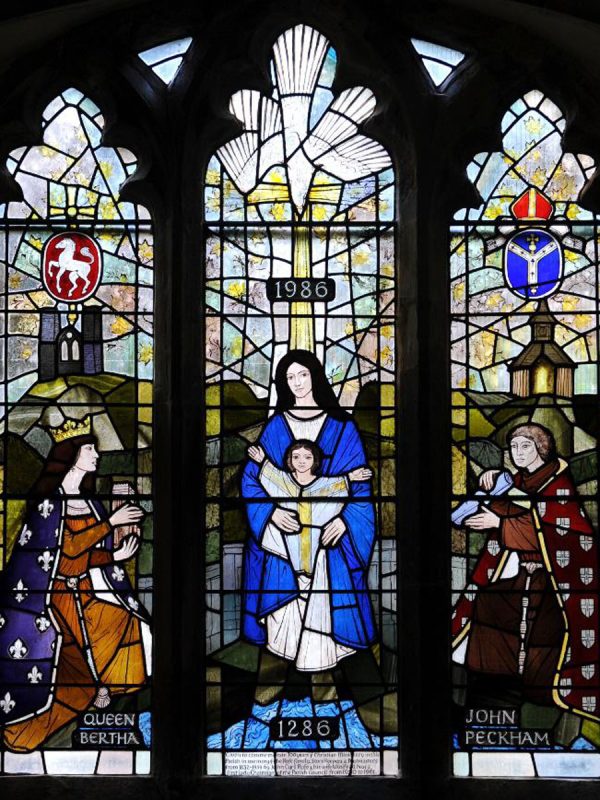
Woodchurch, All Saints
Woodchurch is a complete 13th century building with an especially pure and serene chancel, outstanding in a county with quite a few other chancels of that date. The church has a very good setting, its large churchyard adjacent to the impressive village green and with the tall smock windmill on the hill above.
Nave, chancel and tower with tall, shingled spire are all 13th century. The nave aisles may be of the same time but, if so, they were largely re-windowed in the late medieval period. The tower has the most prodigious buttresses of any in Kent, added later when it must have shown signs of movement. Whoever built them was certainly playing safe! The chancel chapels and porch were added (or rebuilt) in the Perpendicular period.
Within, the nave arcades have alternately circular and octagonal piers of freestone – presumably limestone of some kind – which have been waxed to give an appearance rather like the locally-quarried Bethersden marble. They carry arches with one massive chamfer. The tower and chancel arches are of the same design. The effect is powerful but beautiful.
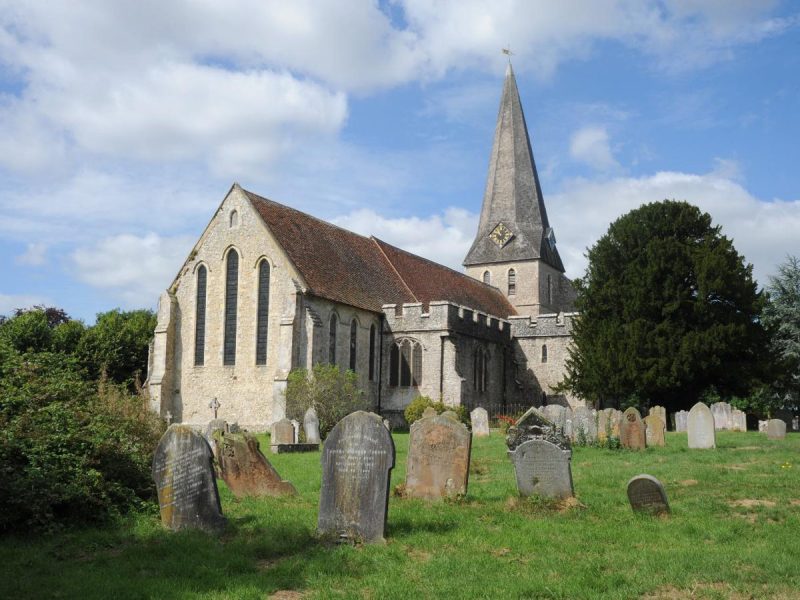
Woodchurch: the exterior from the north-east

Woodchurch: tower with immense buttresses
The sublime chancel has long lancet windows throughout, those in the sanctuary with richly moulded rere-arches on triple shafts. As John Newman pointed out, some of these shafts seem to be of local marble but others are of freestone, waxed to produce a similar appearance. There are handsome contemporary piscina and sedilia.
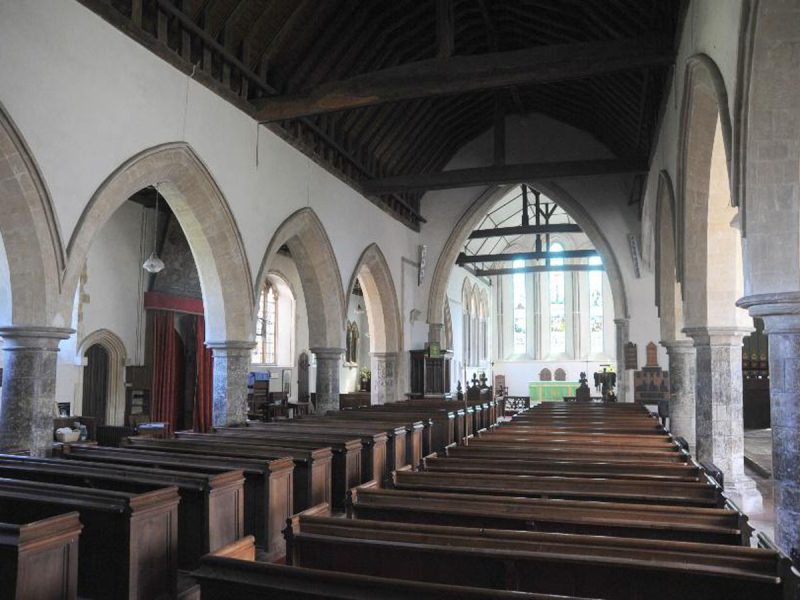
Woodchurch: the interior looking east

Woodchurch: the chancel interior
There is a square Norman font, a pulpit incorporating 16th century woodwork, and some stalls, two with misericords. The Royal Arms are dated 1773 and are signed by a local painter, Joseph Gibson; they are very similar to those in many Romney Marsh churches. The church is predominantly clear-glazed, which in this case is an advantage but there is excellent Kempe glass in the east lancets, a 13th century roundel in the south aisle and some Flemish glass in the north chapel. There are some good brasses, of which that to a 14th century priest, Nichol de Gore, is much the best.
Appledore, St Peter and St Paul
St Peter and St Paul is beautifully placed at the end of Appledore’s long village street, perched above the Royal Military Canal. But what an odd church this is! Much of its oddness is the result of reconstruction after it was burnt out in a raid by the French in 1380 – we tend to forget that the Hundred Years War was not fought just on French soil but in Kent as well. However, damage by the French does not seem to explain the eccentric west tower with its random and entirely asymmetrical assortment of bell-openings in the top stage, reminding us that symmetry was not a high priority for the medieval designer. The only other external feature worth noting is a large late Perpendicular window inserted in the south aisle which has an arch with the slightest ogee at its apex, an unusual and attractive effect. Was this the window paid for by Thomas Knolle and mentioned in his will of 1511?

Appledore: the nave looking east
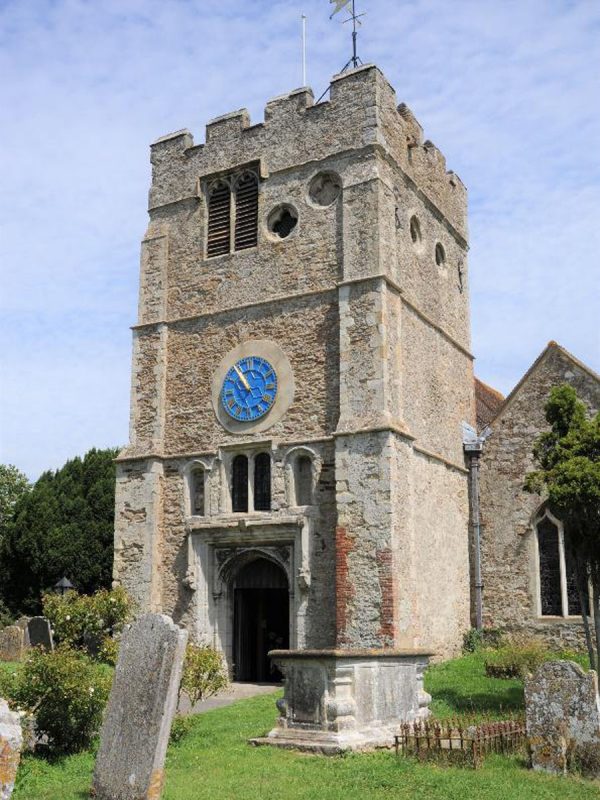
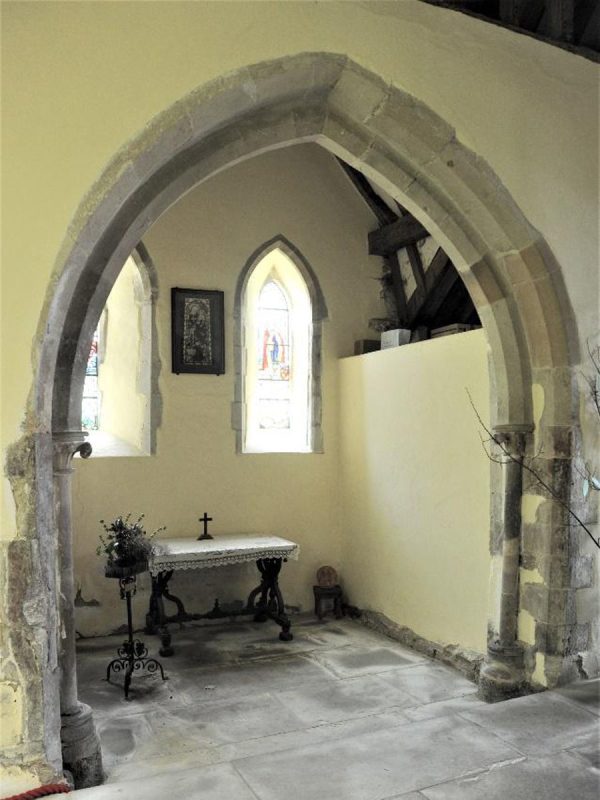
Aesthetically, the problem with the interior is that the nave north arcade was removed after the fire, merging the north aisle and nave in a single space and under a single, massive crown-post roof but leaving the south aisle untouched. The effect is a severely unbalanced interior but one which has plenty of charm. Many of the windows were replaced after the fire in a rather old-fashioned Decorated style. The south arcade was rebuilt in the 15th century, which is probably also the date of the timber chancel arch. The interior’s best feature is the north chancel chapel, 13th century and with its own miniature ‘chancel’ beyond an arch with marble shafts whose capitals have fine stiff-leaf foliage.
As for furnishings, there is an octagonal Perpendicular font, good timber screens to the chancel and both chapels, and the usual Royal Arms of George III, familiar from most churches around here. There is also a series of boards with Biblical texts which are such a feature of the Romney Marsh churches. The stained glass is mostly undistinguished, with the notable exception of some beautiful panels in the two chancel chapels painted in the 1920s by a local artist, G W Humphry.
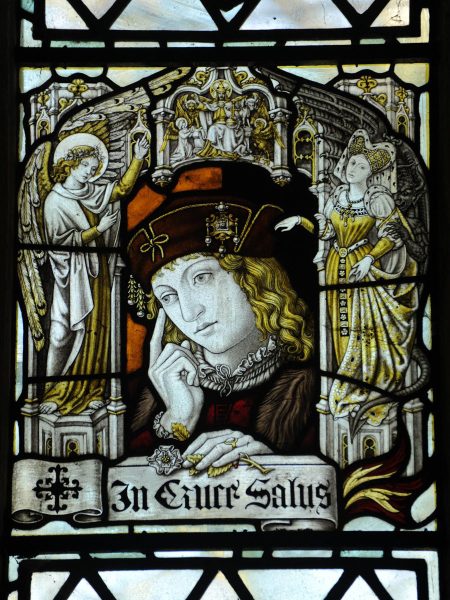
Appledore: glass by G W Humphry

